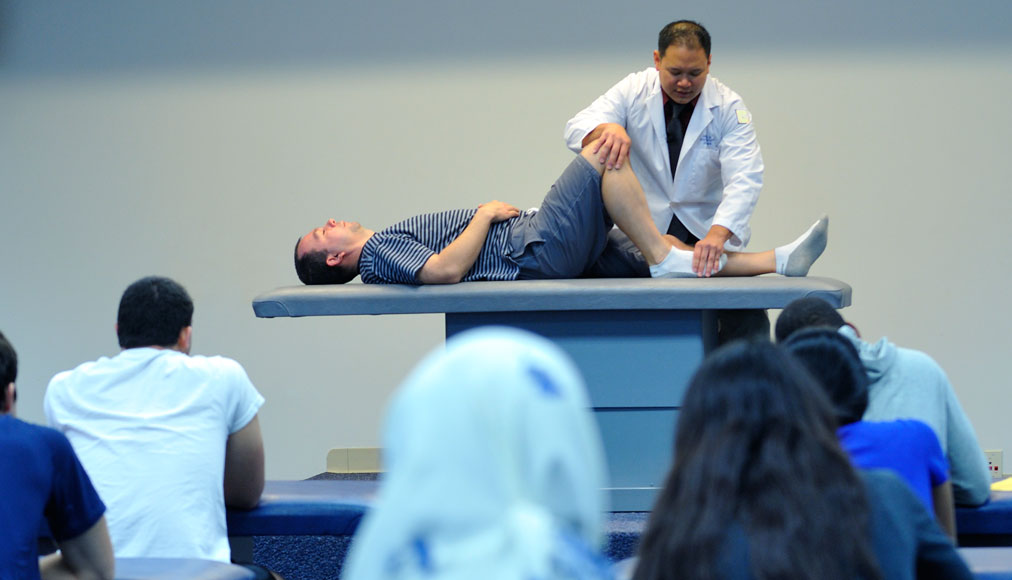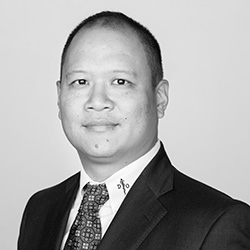
Sheldon Yao

Title: Associate Professor, Chair
Department: Osteopathic Manipulative Medicine
School/College: Osteopathic Medicine
Campus: Old Westbury
Joined NYIT: 2006
When Sheldon Yao (D.O. '02) witnessed the impact of osteopathic manipulative medicine (OMM) for the first time, he was an undergraduate student at Binghamton University on the verge of a life-changing experience. He was shadowing an osteopathic doctor at Wilson Memorial Hospital in Binghamton, N.Y., when a woman with injuries from a car accident, including a neck collar, hobbled into an examination room. The doctor spent 30 minutes treating her with osteopathic manipulative techniques, after which Yao recalls her hopping off the examination table and striding—with no trace of a limp—out of the room.
It was amazing to me that the doctor was able to have such an immediate effect treating her,
he says.
Five years later, Yao graduated from NYIT College of Osteopathic Medicine (NYITCOM) and worked as a family care doctor—a long-held career aspiration—before returning to teach at his alma mater. He is now an associate professor and chair of the Department of Osteopathic Manipulative Medicine.
I took both passions and blended them together,
he says. I had great teachers at NYITCOM and that was one of the reasons I came back to the school.
Yao has been involved with conducting clinical research to investigate the effects of osteopathic manipulative medicine (OMM) on Parkinson’s Disease. Preliminary data of these studies have shown that OMM techniques targeting the spine and extremities to decrease muscle spasms and increase range of motion has been effective in helping to improve motor function and balance in subjects with more advanced Parkinson’s Disease.
As part of the NYIT Center for Sports Medicine at the W. Kenneth Riland Academic Health Care Center, Yao has helped to lead a collaborative research study investigating the effects of OMM in treating sports concussion injuries. There is growing concern about concussion injuries and with osteopathic manipulation, he says, there is a potential for helping patients to heal quicker by addressing the side effects of trauma on the body and to help decrease post-concussion symptoms.
As more researchers move toward an evidence-based approach, Yao sees positive exposure for osteopathic medicine and a growing demand for well-trained physicians in the field-two areas he hopes to nourish through his teaching.
I'm very lucky and proud of the department I work in,
Yao says. We're always trying to further the understanding and science of osteopathic medicine to the best of our ability.









